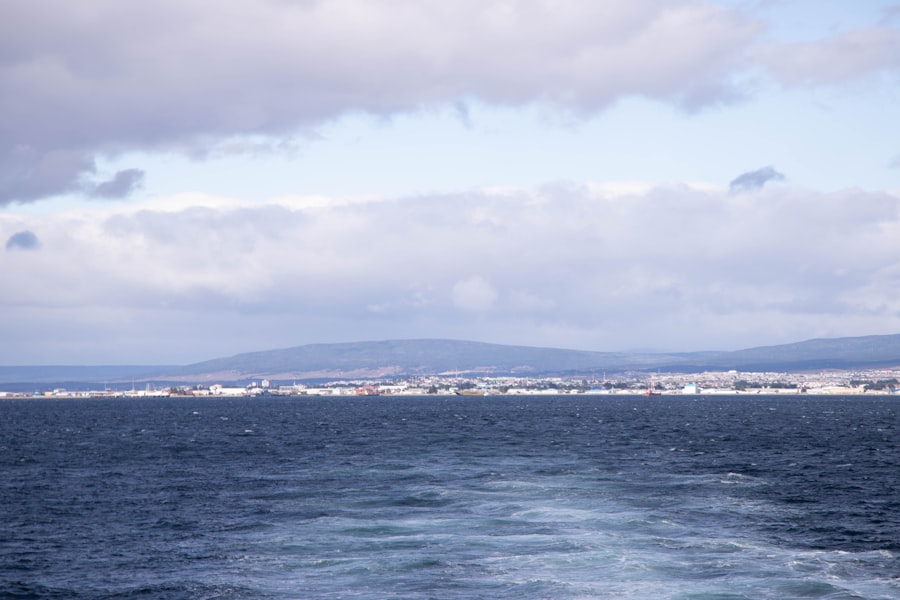The Drake Passage and the Magellan Strait are two of the most significant maritime routes in the southern hemisphere, each with its own unique characteristics and challenges. The Drake Passage, located between the southern tip of South America and Antarctica, is renowned for its turbulent waters and unpredictable weather. Spanning approximately 800 kilometers, this body of water is often considered one of the most treacherous sea routes in the world.
Its name pays homage to Sir Francis Drake, the English explorer who navigated these waters in the late 16th century. The passage serves as a critical link for vessels traveling between the Atlantic and Pacific Oceans, making it a vital corridor for maritime trade and exploration. In contrast, the Magellan Strait offers a more sheltered alternative for ships wishing to navigate around South America.
This narrow waterway, named after the Portuguese explorer Ferdinand Magellan, stretches about 570 kilometers and provides a passage between the Atlantic and Pacific Oceans. The strait is characterized by its intricate network of islands and channels, which can be both a blessing and a curse for navigators. While it offers protection from the harsh conditions of the Drake Passage, the strait’s complex geography can pose significant challenges for those unfamiliar with its waters.
Together, these two maritime routes represent the extremes of navigation in this part of the world, each with its own allure and dangers.
Key Takeaways
- The Drake Passage is a body of water between South America’s Cape Horn and the South Shetland Islands of Antarctica, known for its rough seas and strong winds.
- The Magellan Strait is a navigable sea route located at the southern tip of South America, offering an alternative to the treacherous Drake Passage.
- Weather and climate in the region can be unpredictable, with strong winds, rough seas, and rapidly changing conditions.
- Navigation through the Drake Passage and Magellan Strait presents challenges such as icebergs, strong currents, and narrow channels.
- The region is home to diverse wildlife including penguins, seals, whales, and a variety of seabirds, as well as stunning natural landscapes.
Weather and Climate Considerations
The weather conditions in both the Drake Passage and the Magellan Strait can be highly variable, influenced by a range of climatic factors. The Drake Passage is notorious for its fierce storms and high winds, which can arise suddenly and without warning. The confluence of cold Antarctic waters with warmer currents from the north creates a volatile environment that can lead to rough seas and challenging navigation.
Mariners must be prepared for rapidly changing weather patterns, including heavy rain, fog, and even snow in certain seasons. Understanding these climatic nuances is essential for anyone planning to traverse this formidable passage. On the other hand, the Magellan Strait generally experiences milder weather conditions compared to the Drake Passage.
However, it is not without its own set of challenges. The strait’s geography can create localized weather phenomena, such as strong gusts of wind funneled through narrow channels. Additionally, fog can be prevalent in certain areas, reducing visibility and complicating navigation.
Mariners must remain vigilant and adaptable, as conditions can shift unexpectedly. Knowledge of seasonal weather patterns is crucial for safe passage through both waterways, allowing sailors to make informed decisions about their routes and timing.
Navigation Challenges

Navigating through the Drake Passage presents a myriad of challenges that test even the most experienced mariners. The unpredictable nature of the sea can lead to sudden changes in wave height and direction, creating hazardous conditions for vessels of all sizes. The strong currents that flow through the passage can also complicate navigation, requiring skilled seamanship to maintain course and avoid potential hazards.
Additionally, icebergs and floating debris from Antarctica pose significant risks, necessitating constant vigilance from crew members. In contrast, while the Magellan Strait may offer more sheltered waters, it is not without its own navigation challenges.
Navigators must possess a thorough understanding of local charts and be adept at using navigational aids to avoid shallow areas and submerged rocks. Furthermore, the presence of strong tidal currents can affect vessel maneuverability, making precise navigation essential. Both waterways demand a high level of skill and preparation from those who dare to traverse them.
Wildlife and Natural Wonders
| Location | Wildlife/Natural Wonder | Key Metric |
|---|---|---|
| Galapagos Islands | Giant Tortoises | Number of species: 15 |
| Great Barrier Reef | Coral Reefs | Size: 344,400 square kilometers |
| Serengeti National Park | Wildlife Migration | Number of animals: 1.5 million wildebeest |
| Amazon Rainforest | Biodiversity | Number of plant species: 390 billion |
The Drake Passage is not only known for its challenging navigation but also for its rich marine biodiversity. This body of water serves as a vital habitat for various species of whales, including humpback, minke, and orca whales. Birdwatchers flock to the area to observe seabirds such as albatrosses and petrels soaring above the waves.
The unique ecosystem of the Drake Passage is a testament to nature’s resilience, drawing researchers and nature enthusiasts alike who seek to study its wonders. Similarly, the Magellan Strait boasts an impressive array of wildlife and natural beauty. The strait is home to numerous islands that provide nesting grounds for seabirds and shelter for marine mammals.
Visitors may encounter sea lions basking on rocky shores or dolphins playing in the waters. The stunning landscapes surrounding the strait feature dramatic cliffs, lush forests, and glacial formations that captivate all who venture into this region. Both waterways offer unparalleled opportunities for wildlife observation and appreciation of nature’s splendor.
Historical Significance
The historical significance of both the Drake Passage and the Magellan Strait cannot be overstated. The Drake Passage has long been a critical route for explorers seeking to reach Antarctica or navigate between continents. Sir Francis Drake’s expedition in the late 1500s marked one of the first European attempts to traverse these treacherous waters, paving the way for future exploration and trade routes.
Over the centuries, countless adventurers have braved the passage’s challenges in pursuit of discovery, contributing to our understanding of geography and oceanography. The Magellan Strait also holds a prominent place in maritime history. Ferdinand Magellan’s expedition in 1520 was a groundbreaking journey that demonstrated the feasibility of circumnavigating the globe.
His successful navigation through this strait opened new avenues for trade and exploration between Europe and Asia. The strait has since served as a crucial passage for ships seeking to avoid the perilous waters of Cape Horn, further solidifying its importance in global maritime history.
Safety Precautions and Protocols

Safety is paramount when navigating through either the Drake Passage or the Magellan Strait. Mariners must adhere to strict safety protocols to mitigate risks associated with these challenging waters. Before embarking on a journey through the Drake Passage, vessels should conduct thorough inspections to ensure all equipment is functioning properly.
Life-saving gear such as life jackets, flares, and emergency beacons should be readily available on board. Additionally, crew members should be trained in emergency procedures to respond effectively to any unforeseen circumstances. In the Magellan Strait, safety precautions also play a crucial role in ensuring a successful voyage.
Navigators should familiarize themselves with local regulations regarding navigation and environmental protection. It is essential to maintain communication with other vessels in the area to avoid collisions or misunderstandings. Moreover, mariners should be aware of potential hazards such as shallow waters or strong currents that could pose risks during transit.
By prioritizing safety measures and adhering to established protocols, sailors can enhance their chances of a safe passage through these remarkable waterways.
Modern Navigation Technology
Advancements in modern navigation technology have revolutionized maritime travel through challenging routes like the Drake Passage and Magellan Strait. GPS systems have become indispensable tools for mariners, providing precise positioning information that enhances navigational accuracy. Electronic chart systems allow sailors to access up-to-date maps and data about underwater topography, currents, and potential hazards.
These technologies have significantly improved safety by enabling real-time monitoring of vessel movements. In addition to GPS technology, radar systems play a crucial role in navigating through these waters. Radar allows mariners to detect other vessels, landmasses, and obstacles even in low visibility conditions such as fog or heavy rain.
Furthermore, satellite communication systems enable constant contact with shore-based support teams or other vessels in the area, facilitating timely assistance if needed. As technology continues to evolve, it empowers sailors with tools that enhance their ability to navigate safely through some of the world’s most challenging maritime environments.
Planning and Preparation
Thorough planning and preparation are essential components of any successful journey through the Drake Passage or Magellan Strait. Mariners should begin by researching their intended route extensively, taking into account seasonal weather patterns, tidal currents, and potential hazards along the way. Creating a detailed itinerary that outlines key waypoints can help ensure a smooth passage while allowing for flexibility in case conditions change unexpectedly.
In addition to route planning, mariners must also prepare their vessels for the journey ahead. This includes conducting routine maintenance checks on all equipment, ensuring that safety gear is readily accessible, and stocking provisions for the duration of the trip. Crew members should undergo training sessions to familiarize themselves with emergency procedures specific to these waterways.
By investing time in thorough preparation, sailors can significantly increase their chances of navigating successfully through these remarkable yet challenging maritime routes.
Crossing the Drake Passage by Ship
Crossing the Drake Passage by ship is an adventure that many seafarers dream of undertaking. However, it requires careful consideration and respect for the unpredictable nature of these waters.
Mariners embarking on this journey should be prepared for potential discomfort due to high waves and strong winds but should also embrace the thrill of traversing one of nature’s most awe-inspiring landscapes. During a crossing of the Drake Passage, passengers often have opportunities to witness breathtaking sights such as towering waves crashing against rocky shores or seabirds gliding effortlessly above turbulent waters. Experienced crew members will provide insights into navigating these challenging conditions while ensuring passenger safety remains a top priority throughout the journey.
For many adventurers, crossing this iconic passage becomes an unforgettable experience that deepens their appreciation for both maritime exploration and nature’s raw power.
Exploring the Magellan Strait by Boat
Exploring the Magellan Strait by boat offers a unique opportunity to immerse oneself in stunning natural beauty while navigating through historical waters. Unlike the often tumultuous conditions found in the Drake Passage, boating through this strait allows for a more leisurely pace as travelers take in breathtaking views of rugged coastlines dotted with islands and lush vegetation. Kayaking or sailing through these sheltered waters provides an intimate connection with nature that larger vessels cannot replicate.
As boaters navigate through various channels within the strait, they may encounter diverse wildlife such as sea lions basking on rocky outcrops or playful dolphins swimming alongside their craft. The chance to explore hidden coves or secluded beaches adds an element of adventure to any journey through this remarkable region. With careful planning and respect for local ecosystems, adventurers can create lasting memories while discovering all that the Magellan Strait has to offer.
Tips for a Smooth Passage
To ensure a smooth passage through either the Drake Passage or Magellan Strait, several key tips can enhance any sailor’s experience. First and foremost, staying informed about current weather conditions is crucial; utilizing reliable forecasting services can help mariners anticipate changes that may impact their journey. Additionally, maintaining open communication with other vessels in the area fosters collaboration among sailors navigating these challenging waters.
Another important tip involves being adaptable; conditions can change rapidly in both waterways, so flexibility in plans may be necessary to ensure safety and enjoyment during transit. Lastly, embracing patience is essential; whether facing rough seas or navigating complex channels within the strait, maintaining a calm demeanor will contribute positively to both crew morale and overall voyage success. By following these tips along with thorough preparation efforts prior to departure, sailors can enhance their chances of enjoying memorable experiences while traversing these iconic maritime routes.
The Drake Passage and the Magellan Strait are two of the most significant maritime routes in the Southern Hemisphere, each with its own unique challenges and historical importance. The Drake Passage, known for its turbulent waters, serves as a critical gateway between the Atlantic and Pacific Oceans, while the Magellan Strait offers a more sheltered, albeit narrower, passage. For those interested in exploring the geographical and historical significance of these routes, a related article can be found on MyGeoQuest. This article delves into the intricacies of navigating these waters and their impact on global trade and exploration. You can read more about it by visiting this page.
WATCH NOW! Drake Passage: Earth’s Deadliest Waters Revealed
FAQs
What is the Drake Passage?
The Drake Passage is the body of water between the southern tip of South America and the northern tip of the Antarctic Peninsula. It connects the southwestern part of the Atlantic Ocean with the southeastern part of the Pacific Ocean.
What is the Magellan Strait?
The Magellan Strait, also known as the Strait of Magellan, is a navigable sea route in southern Chile, separating mainland South America to the north and Tierra del Fuego to the south. It is the most important natural passage between the Atlantic and Pacific oceans.
How are the Drake Passage and Magellan Strait significant for navigation?
The Drake Passage and Magellan Strait are significant for navigation as they provide important sea routes for ships traveling between the Atlantic and Pacific Oceans. They are key passages for maritime trade and transportation, as well as for scientific research expeditions to Antarctica.
What are the weather and sea conditions like in the Drake Passage and Magellan Strait?
The Drake Passage is known for its notoriously rough seas and challenging weather conditions, with strong winds and large waves. The Magellan Strait also experiences strong winds and can have unpredictable weather, but it is generally considered to be more sheltered than the open ocean of the Drake Passage.
Are there any notable landmarks or points of interest in the Drake Passage and Magellan Strait?
In the Drake Passage, Cape Horn is a famous landmark located on the southern tip of South America. In the Magellan Strait, the town of Punta Arenas is a notable point of interest, serving as a gateway to the region and a base for exploring the surrounding area.
